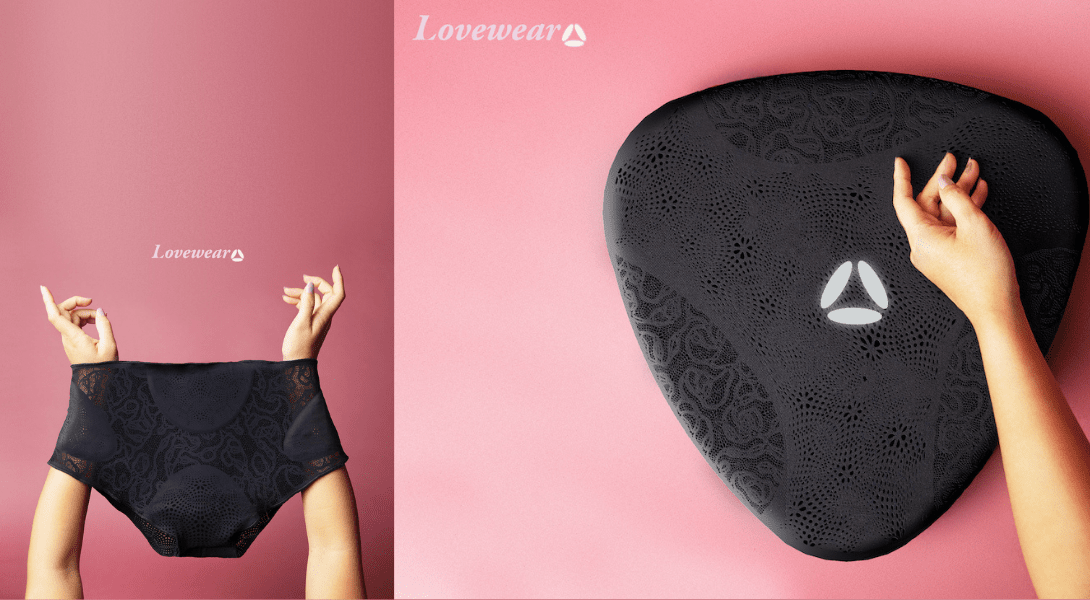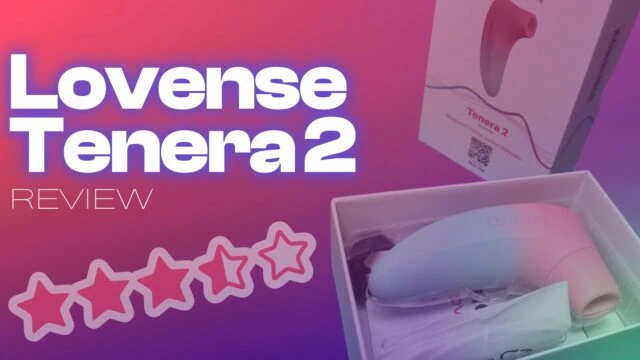Inclusive design and manufacturing company, Witsense, has launched a new product line that uses soft robotics to simulate physical human contact on the genitals.
The Lovewear collection has been designed to enable people of all abilities to explore their sexuality autonomy, combining wearable fashion tech with disability in mind.
The new product line came about as part of collaborative research project Re-Fream, an EU-funded initiative where designers team up with scientists to rethink the manufacturing process of the fashion industry.
The Lovewear release follows the brand’s previous collection, Sensewear, which focused on clothing and fashion accessories that stimulate the senses.

How it works
Made from linen and lace, the fashion tech underwear is connected to a compatible phone app, and more uniquely, a ‘console’ pillow.
Co-founder, Emanuela Corti, explains that the wearer can hug, cuddle, caress, or press the pillow interface “as a surrogate for human contact”, and is easily accessible if you are not able to reach your genitals.
When touched, the pillow interface activates the inflatable inserts in the underwear, so the wearer can experience a hug-like touch on their body.
“We wanted to step beyond the conventional vibration stimulation, to recreate a more natural, organic experience,” Corti says.
While the pillow ideally represents a partner to hold and embrace, Corti says Lovewear will never replace human contact: “On the contrary, it should be seen as a temporary step towards a more satisfactory intimate life.”
Lovewear could be used by anyone who wants to explore intimacy from a different perspective, while giving more benefits to movement-impaired people. It can be used individually or with a partner, and for couples with disabilities where movements can be challenging.
The soft robotics are detachable and can snap on to the underwear with magnetic attachments, which also means it can be comfortably washed as any regular clothing.
Before Lovewear goes to market, however, Corti shares that it will have to undergo some tests. She adds that Witsense is already developing the textile part and improving the inflatables, for example, some parts will have silicon elements embedded to increase pressure and stimulation.

Disability-conscious sextech
“Several disabilities involve movement impairment, yet the majority of sex toys are not easy to hold and control,” says Corti.
Nevertheless, sex technologies such as Handi and OhMiBod Rev and smart sex toys including Hot Octopuss and WeVibe are becoming increasingly designed with mobility issues in mind.
Psychologist and sexologist Dr. Paola Tomasello, who is part of the Witsense team, says: “Disabled people might have a carer who helps them in the morning getting dressed and later on in the day to shower. Witsense wanted to create a wearable that can be worn in the morning and activated any time of day, without additional help.”
Gender-conscious sextech
Even though this first prototype focuses on the needs of people with vulvas, Lovewear is designed to be gender inclusive, including for those transitioning. Corti adds that Witsense is ready to start developing a version for penis-owners as soon as it can secure new funds.
For more on sex and disability, check out the upcoming love, sex and disability conferences Sexability and Loveabilities.
Read Next: Must-have sextech, toys and accessories for people with disabilities






Leave a Reply